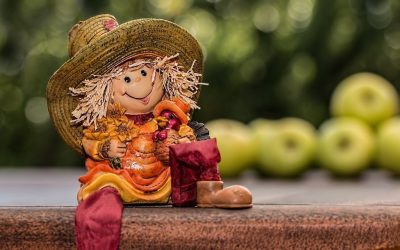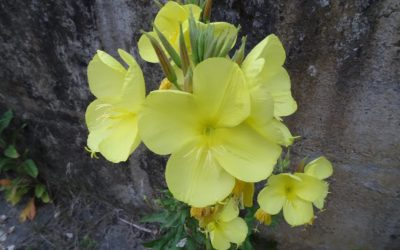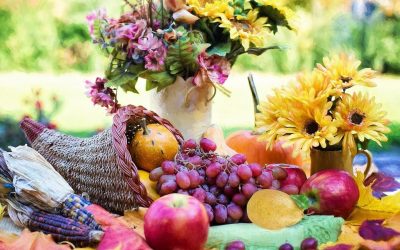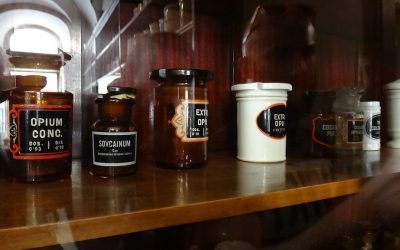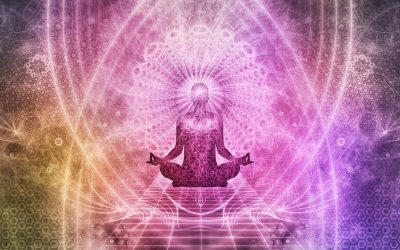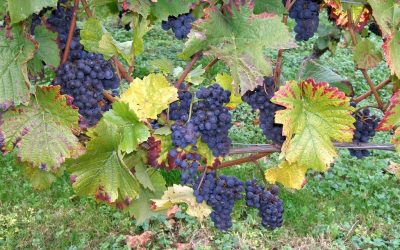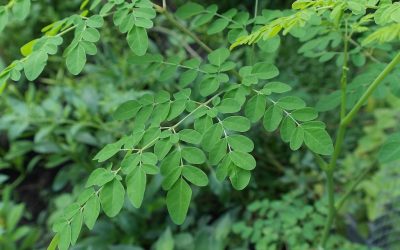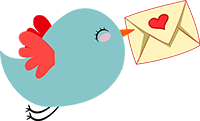Nature Notes:
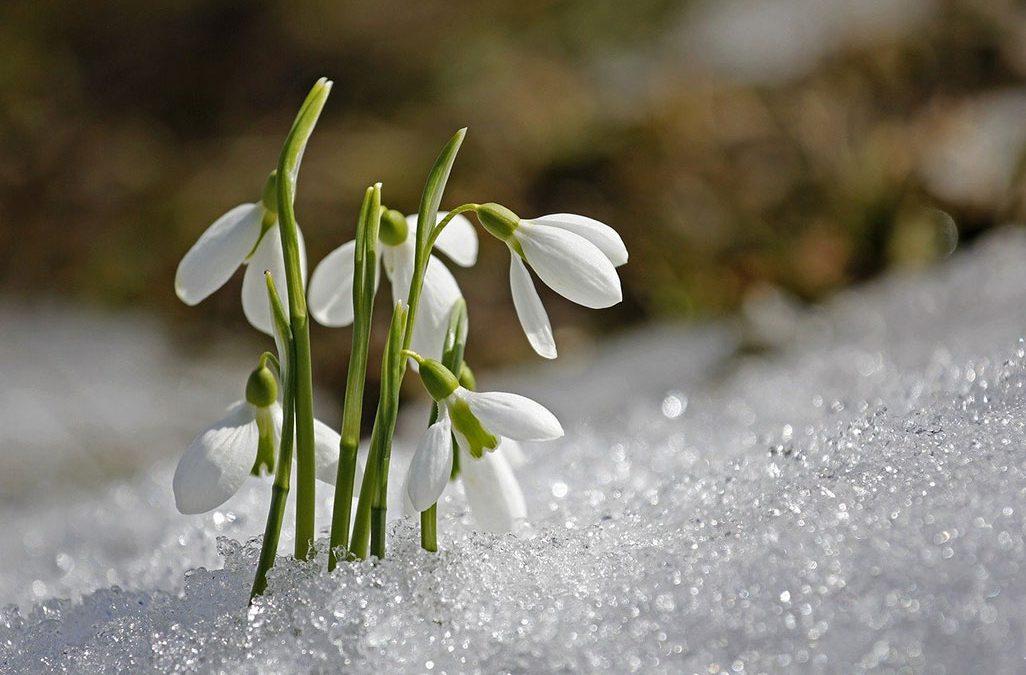
Imbolc Awakenings
Imbolc, the return of the light
Winter is still with us, although now, in a moody phase. One day, it is frosty, stormy, and inhospitable, and a couple of days later, the sun pops out to tease us. But there is one sure signal that things are shifting ever so slightly: the days are noticeably longer now.
Imbolc is the season of Brighid, a Maiden Goddess, who signifies the growing light. Every passing day, the sun adds a few minutes of light as it climbs ever higher in the sky.
To be sure, at the beginning of February, it is still winter. But, if you look closely, you will notice the swelling buds. Some precocious little flowers bravely defy all the odds, pushing their way through the snow, or leaf litter: snowdrops, winter aconite or dwarf crested irises are among the earliest and toughest. Without a doubt, the life force stirs deep within the earth. Last season’s seeds are swollen with water, ready to germinate. The wheel of the seasons is turning, and the sap rises again.
Purification and Fasting
Imbolc, or ‘Candlemas’ in Christian terminology, is the festival of the growing light, a time of cleansing and purification. It prepares us for the season of Lent.
In the past, Lent was a period of abstinence and fasting to cleanse the body from the residues of heavy winter foods to prepare for spring and the new cycle of growth.
Envisioning the future
At Imbolc, we visualise the possibilities that lie ahead. During this liminal time of transition, we consult the Gods make plans, take vows and pledge affirmations. Take time out to prepare yourself for the challenges and opportunities that lie ahead. Reflect on your strengths and weaknesses, virtues and vices. Commit to your soul’s journey.
What nourishment does your soul need? What are your intentions? And how do you want to give back to life? Are you walking your talk?
Imbolc is a good time to select your seeds and charge them with intention. It is a time to kindle your inner flame. Take care of the growing but delicate light. Soon the Sun will rise, and its power will grow strong again.
Current issue
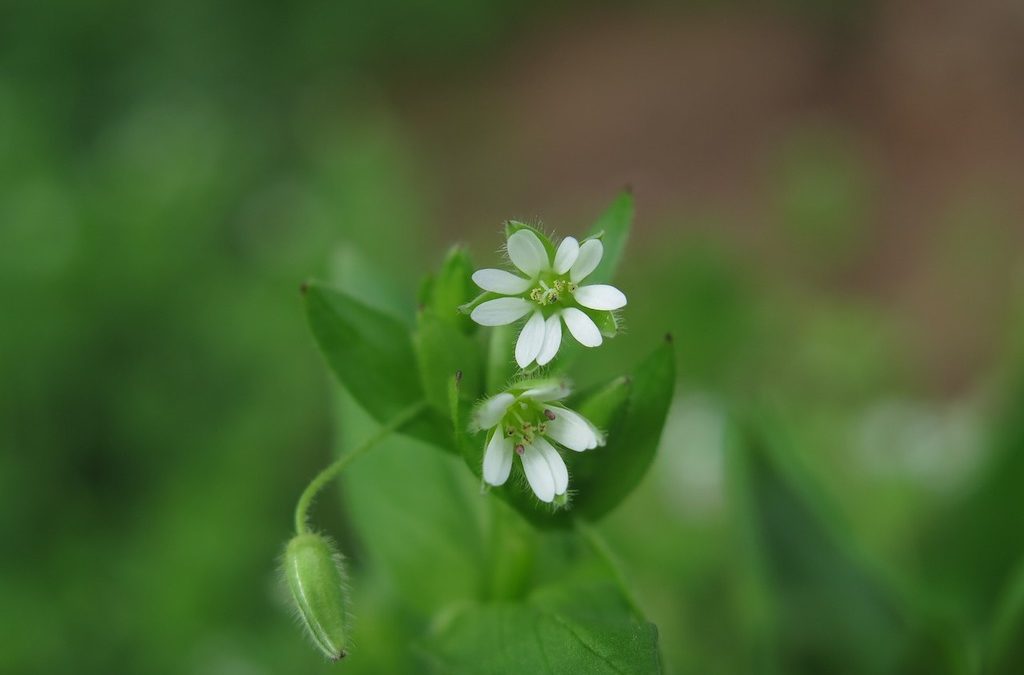
Foraging Chickweed
Chickweed (Stellaria media)
Once winter has settled in, foraging has come to a standstill. We have to rely on previously gathered supplies. Except, if you are lucky enough to live in a temperate climate zone, there may be at least one herb that defies the elements. You might have spotted it in your veggie plot: a little sprawling herb with heart-shaped leaves and star-shaped flowers that belongs to the Pink family known as Chickweed.
Chickweed is fairly hardy. It defies the elements and can pop up early in the year when other herbs are still asleep.
Chickweed is one of those herbs that gardeners love to hate. They try everything to get rid of this persistent ‘weed’ that pops up anywhere humans have toiled to cultivate the ground. It is only natural.
Chickweed is one of those herbs that blush at bare soil and quickly spread out to cover mother earth’s nakedness. Chickweed binds the soil, prevents it from washing away and drying out – the consequences of standard gardening practices.
Alas, as soon as this little healer herb appears, gardeners grit their teeth and start a crusade. How dare this audacious herb invade their plot?
But instead of battling it, you could welcome it as a gift. Chickweed is a blessing, not just for the earth but also for us. It is rich in chlorophyll, minerals, and vitamins that are sorely needed at this time of the year. And all we have to do is clip its tender tops.
Chickweed has a mild flavour and is incredibly versatile. It can be used like alfalfa to garnish sandwiches, soups, and salads. It can also be incorporated into omelets, fillings, sauces, dumplings, or quiches – the possibilities are endless. But it should always be used fresh and finely minced, as the stems can be somewhat stringy. When cooking with Chickweed, bear in mind that it cooks down to practically nothing in no time at all, so just add it at the last moment and don’t cook it for long. Overcooking would only diminish its benefits.
Chickweed also offers some valuable medicinal properties. The old herbalists describe its effect as cooling and soothing. They used it as an expectorant for afflictions of the upper respiratory tract, like an irritable cough. The same cooling and soothing properties also calm inflamed sores, rashes, itchy skin conditions, and burns. Traditional herbalists used it to make ointments and poultices for treating eczemas, boils, and abscesses.
Sometimes it is made into a tincture, but fresh works best. If you want to concentrate its effect, it can be juiced. But it does not keep very long. It can be frozen, but that will diminish some of its goodness.
Warning: some people have reported allergic reactions to Chickweed collected from chalky soil. Like many other members of the Pink family, Chickweed contains saponins, and these can be toxic in large quantities.
Plant Profile:
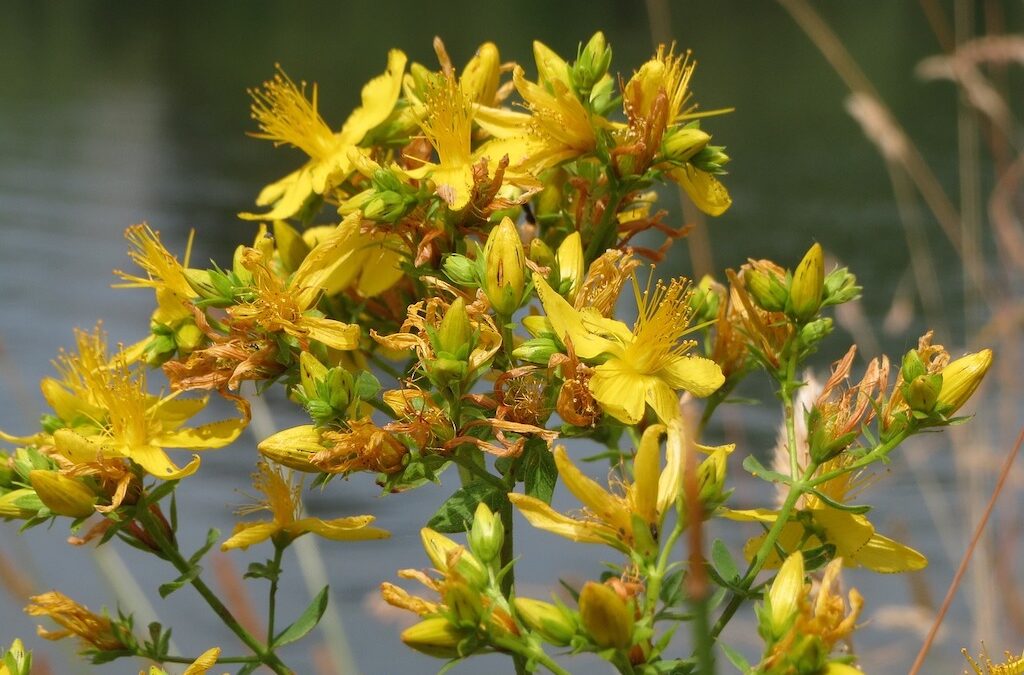
Plant Profile: St. John’s Wort
Hypericum perforatum (Clusiaceae)
St John’s Wort is the kind of herb that gladdens the heart just by looking at it. Many magical and medicinal properties have been ascribed to it and even its name alludes to certain divine connotations: it was named in honour of St. John, the Baptist, whose saints’ day is on June 23rd. He presides over the Christianised version of the Midsummer Feast, the most important feast day of the ancient pastoral calendar. Yet, it is often considered a noxious weed, particularly in agricultural circles. Let’s take a closer look.
Description:
St. John’s Wort is a perennial herbaceous plant that can reach a height of up to 2ft. The stem bears two raised lines along their length and branches in the upper parts. Numerous translucent dots cover the ovate to linear leaves. These are oil glands that store essential oil. The margins are entire and show tiny black dots around the edges. These oil glands produce the red oil. The five-petaled, yellow flowers look like little stars or suns. Clusters of flowers bloom from June to September. The tiny seeds are borne in capsules. St John’s Wort tastes balsamic, aromatic and slightly bitter. Squish the flower-buds between your fingers to verify its identity. St. John’s Wort, when pressed, stains red.
Habitat:
St. John’s Wort grows throughout Central Europe and the British Isles. Its habitats are verges, meadows, hedgerows, wood clearings, and waste places. It has become naturalised in many parts of the US, where it is regarded as a noxious weed.
HISTORY
The Doctrine of signatures assigns this herb to the Sun, not only because its flowers look so sunny, but also because its flowering- and gathering season coincides with the zenith of the Sun at Midsummer. At this time, its potency is at its peak. The reddish oil has been associated with blood, the sacred juice of life. Saint John’s Wort has long been revered as a magical herb that was said to ward off all kinds of witches and devils, and was even often offered as a Midsummer sacrifice to ensure the continuity of life.
Some sprigs were cast on the solstice bonfires, others were blessed and hung above the doorways and into the rafters of stables and barns. This custom was believed to offer protection against the hazards of the burning power of the sun: fires, lightning, and droughts, and to ward off witches and demons.
St John’s Wort enjoyed its greatest glory during the Middle Ages, when it was known as ‘Fuga Daemonium’ and it was deemed a protective force against all evil.
All efforts of the Church to demonise the herb had failed and so it was absorbed into Christian mythology and given to St. John, the Baptist, who’s Saints Day falls on June 24th, right at the height of the herb’s flowering time. The red oil was said to be a reminder of the Saint’s martyrdom.
Many of the old Pagan traditions were absorbed into the new faith but reinterpreted to fit its own mythology: It was probably the only herb to have been used in the Witch trials to identify witches, using talismanic magic:
The formula:
SATOR
AREPO
TENET
OPERA
ROTAS
was written on a piece of paper and placed on a piece of leather along with some St. John’s Wort that had been gathered during the first quarter of the moon. This talisman was supposed to reveal the true identity of a witch, since no witch could disguise her identity in the presence of such a forthright and radiant herb. It had the power to banish all the evil powers. (Just how it did so is not clear).
Today, St. John’s Wort’s magical associations have largely been forgotten. But it continues to play an important role in medical herbalism, especially as a natural anti-depressant. But not all consider it benevolent. In the US, it is considered a noxious weed that is dangerous to cattle. The allegations are that its photosensitising properties are hazardous to humans and cattle alike.
St. Johns Wort is indeed photosensitising. It is most likely to harm grazing animals that may consume large amounts of it while being exposed to intense heat without access to sheltering shade. This problem is severe in the overgrazed southwestern parts of the US. Internal use of St. John’s Wort herb rarely poses this threat to humans, (although it is conceivable). It is therefore recommended to avoid St. John’s Wort if one spends a lot of time in the sun or in the solarium.
Caution is also advised when using it in the treatment of depression. St. John’s Wort affects the serum-levels of the Neurotransmitter Serotonin, which may produce negative effects when used with other anti-depressant drugs that also affect the metabolism of neurotransmitters. Finally, St John’s Wort is a powerful liver cleanser. It cleanses the liver eliminates all kinds of toxins – including pharmaceutical drugs and birth control pills, rendering them useless. Thus, it is always advised to consult with a qualified practitioner who can advise you on any drug interactions or other ill-effects, before attempting to use St. John’s Wort medicinally.
Medicinal Uses
PARTS USED: Aerial parts, collect when in flower, for the oil usually only the flowering tops are used
CONSTITUENTS: Essential oil – caryophyllene, methyl-2-octane, n-nonane, n-octanal, n-decanal, a-and b pinene, traces of limonene and myrcene, hypericin (photosensitizing), hyperforin, Glycosides (rutin), tannin, resin, pectin
ACTIONS: Antidepressant, sedative, nervine, anti-inflammatory, anti-bacterial, astringent, vulnerary, diuretic
MEDICINAL USES:
Internal Use:
St. John’s Wort is a tonic for the whole body: a gentle cleansing remedy that improves overall function and tones the vital organ systems. It improves and regulates the metabolism and tones the stomach, liver, and kidneys, thus helping the body to clear out toxins. Internally, a small amount of the oil or, better still, the expressed juice, taken on an empty stomach, has been used for treating stomach ulcers and gastritis. Freshly pressed St. John’s Wort juice also has a history of use as an astringent to stop internal bleeding, spitting of blood, and (bloody) diarrhoea.
St John’s Wort is also an excellent nervine. Its calming and sedative properties soothe the nerves, headaches and migraines and alleviate anxiety, melancholy, and irritability, especially during menopause, or PMT. Old herbals also recommend it for ‘shaking and twitching’ (Parkinson? Epilepsy?). It is considered a specific for curing bed-wetting in children, especially when caused by anxiety. For this purpose, 1 tablespoon of the infusion, given at bedtime, is said to suffice. As a diuretic, St. John’s Wort assists the kidneys to flush waste materials and toxins from the body. The tea is effective for indigestion, stomach catarrh, and as a vermifuge. For therapeutic purposes, it is best to use the fresh herb or tincture, as the dried herb has lost much of its potency.
External Use:
In the past, the external use of St. John’s Wort was much more common. It was cherished as an excellent wound healer that could cleanse the wound and ‘knit the skin together’. It was applied to wounds and cuts, bruises, varicose veins, and burns. For this purpose, the expressed juice, or a compress made from the fresh, bruised herb was used. Modern herbalists prefer a diluted tincture. Tabernaemontana reports that the powdered dried herb can be strewn directly into ‘foul’ wounds to clean and heal them. In his days, midwives also used the herb as a fumigant to help women who encountered severe problems with their pregnancies or during childbirth.
St. John’s Wort Oil
Traditionally, the flowers were steeped in Poppy seed oil to produce a bright red oil. However, since Poppy Seed oil has become very hard to find, Olive oil can be substituted. After gathering the fresh tops, spread them out on a baking sheet and let them wilt for a few days. This will evaporate most of their water content. Fill a jar with the wilted flowering tops and cover with oil. Macerate for 4 weeks in full sun. Strain the oil, repeat the process using the same oil but adding fresh flowers. This oil is used for treating sunburn, other mild burns, neuralgia, sciatica, and rheumatic pain, as well as sprains and strains, cuts, wounds, as well as muscle aches and nerve pains. It is also said to reduce scarring. Tabernaemontana mentions an elaborate recipe for a compound oil, which, among other things, includes various gums and resins, such as frankincense, myrrh, mastic and other herbs, including Plantain leaves, Yarrow and Tormentil, which he claims, will be a superior oil, effective for treating just about any kind wound.
CAUTION:
Since St. John’s Wort contains the photosensitising agent hypericin, avoid direct sunlight after either internal and external use of St. John’s Wort. If you are taking pharmaceutical drugs, especially anti-depressants, consult with a knowledgeable doctor regarding the possibility of negative drug interactions. The efficacy of birth control pills can not be taken for granted if St. John’s Wort is used orally at the same time.
More articles:
Gums, Resins, Latex
Gums, resins and latex are the sticky stuff that some plants excrete when the outer ‘skin’ or bark has been injured.
Vegetable Oils-Liquid Gold
This article is about common and uncommon vegetable oils that are derived from seeds, nuts and fruit pulp including their fatty acid profile.
Gardening Jobs in October
The summer is over, and the garden is beginning to wind down. But there are still quite a lot of gardening jobs left to do in October.
Evening Primrose Oil
Evening Primrose Oil is one of the best sources of Gamma Linoleic Acid (GLA) with valuable therapeutic and medicinal properties.
Foraging: Evening Primrose (Oenothera biennis)
Evening Primrose is a conspicuous and frequently encountered herb, but did you know that every part of it is edible?
Gardening Jobs in September
There is plenty to do in the garden in September – not just harvesting and preserving the harvest for later, but also sowing and propagating.
Medicinal Uses of Poppy (Papaver somniferum)
To this day, opium and its derivatives supply us with some of the most effective painkilling agents used in medicine. These substances bring great relief to those suffering from agonizing pain. But they are also dangerously addictive.
Plant Profile: Poppy (Papaver somniferum)
The story of opium poppy in all its different facets, the prehistoric and historical record, its mythology, and use in folk magic and medicine to its modern use.
Ayurveda – The Science of Life
Ayurveda literally means ‘science of life’. It is one of India’s oldest indigenous healing tradition,s dating back 5000 years.
What Gardening Jobs are there to do in August?
The explosion of colour, scent and texture is a fiesta for the senses. But above all, allotment gardeners love this time of the year.
The Cultural History of Grapes
There are at least 8000 cultivated varieties of grapes, most of which are grown in the Northern Hemisphere. Grapes are one of the most important agricultural crops in the world. But they have far more uses than ordinarily meet the palate.
Plant Profile: Moringa
The Moringa tree, though not well-known outside its native habitat, is a blessing, offering multiple gifts for the benefit of mankind.




